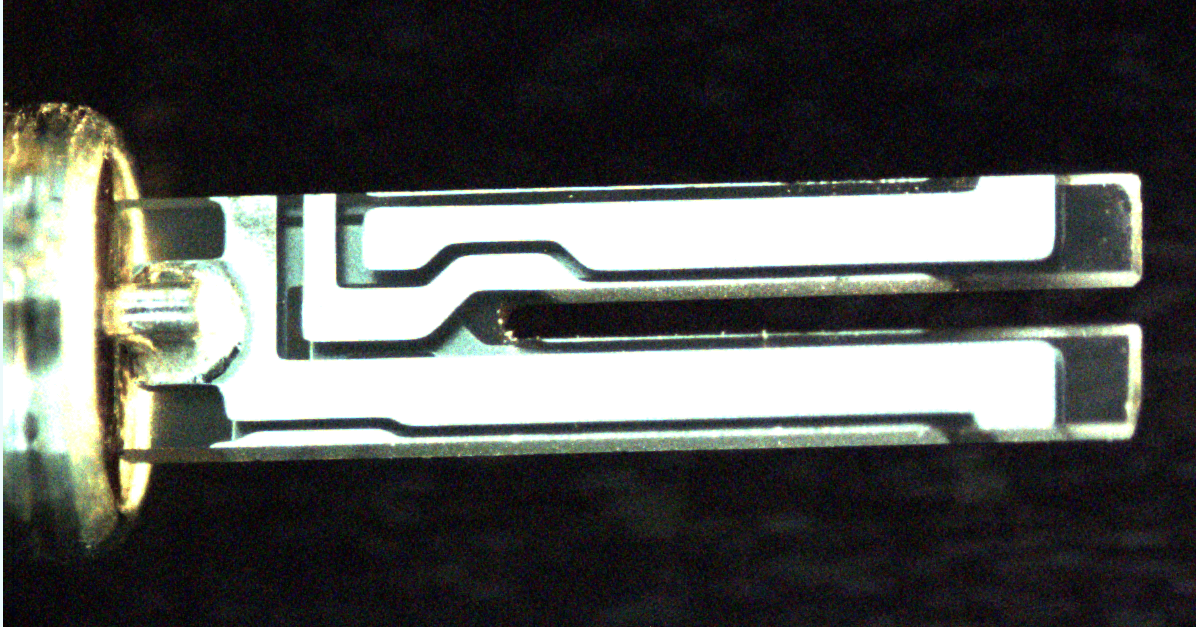
The tuning fork crystal as it is used in watches is something like the “classic” among the quartz crystals. Its frequency is always exactly 32.768 kHz. But why this value?
The answer to this question can be found in the history of quartz crystals. Bell Telephone Laboratories, the former research department of today’s telecommunications group AT&T, is one of the pioneers in this field. Initially, their research focused on stabilizing radio frequencies, but it soon became clear that quartz crystals are also useful for time measurement. In 1928, the Americans proudly presented the world’s first quartz-controlled Clock.
The Tuning Fork Crystal Sets New Precision Standards
Before this breakthrough, all clocks worked purely mechanical. By installing the quartz crystal and a corresponding energy source that makes the quartz oscillate, an electronic component was introduced for the first time. And it worked: The new quartz watch ran much more precisely than the purely mechanical competition.
But what function is actually fulfilled by the quartz crystal? Put simply, the quartz crystal ensures that the watch “knows” how long a second lasts. This is achieved by generating a frequency of exactly one Hertz. Hertz is the common unit of measurement for frequencies. It indicates the number of repetitive processes per second in a periodic signal; in this case the advancement of the second hand by one position on the clock-face.
Output Frequency of 32.768 kHz?
Where does the unique standard frequency for a tuning fork crystal of 32,768 Hertz originate? To understand this, you must know that the frequency of a quartz crystal depends on its shape and size. A quartz with a natural frequency of only one Hertz would be so large, it would be more suitable for the “Big Ben” clock tower than for a wrist watch. Obviously, that would be rather impractical in terms of production and use so there’s a special trick.
Watch crystals with a frequency of 32.768 kHz are relatively easy to produce. Built into the watch, its original frequency is split using so-called T-flipflops or ripple counters. Each T-flip-flop can halve the frequency of the quartz. If 15 of these T-flipflops are connected in series, the output frequency of 32.768 kHz equals exactly one Hertz. Thus, the frequency of the classic Tuning fork crystal is ultimately the result of a simple arithmetic operation and the general conditions of quartz production.
Precise Frequencies for the Mass Market
Several decades passed before the quartz watch finally found its way into the mass market. In 1969, the Japanese company Seiko launched the first commercially available quartz wristwatch on the market. However, the cost of 460,000 Yen was equivalent to that of a small car. But development was rapid: By the mid 1970s, quartz watches were already cheaper than “conventional” watches with purely mechanical movements.
At that time, Jauch also seized the opportunity and built up its own trade- and production-network for tuning fork crystals and further frequency control products. Naturally, tuning fork crystals are still part of today’s portfolio. However, Jauch is also offering a wide range of oscillators with the tuning fork-frequency of 32.768 kHz.


 Deutsch
Deutsch 




Although the World’s first quartz clock was built by Bell Labs in 1927/8 I am unable to find a reference to a quartz watch before Seiko’s in 1969. I should be interested to know more about the one you refer to.
Hi Mr. Bryant,
in the 1930s, Adolf Scheibe and Udo Adelsberger worked on the construction of quartz clocks at the „Physikalisch-Technische Reichsanstalt“ in Berlin. Quartz Clocks were also popular in the UK, were Louis Essen constructed in 1938 clocks with ring-shaped quartzes at the National Physical Laboratory.
The first commercially available quartz watch for industry and science was developed by the Physikalisch-Technische Entwicklungslabor Dr. Rohde und Dr. Schwarz (today: Rohde & Schwarz) in Munich. The CFQ quartz watch was launched on the market in 1938.
The first wristwatch for the mass market was indeed Seiko’s in 1969.
Yes, that’s 2 to the power of 15, giving 32,768, just pointing that out as well would of been relevant. Do you have any idea what metal the tuning fork is coated with along its surface? I found what you have written interesting.
Is this quote relevant to your mention of the first quartz watch – ‘The first “portable” quartz clock was probably the Model CFQ pro- duced by Rohde & Schwarz in Germany beginning in 1938 (Fig. 7). Weighing 46 kg, it was accurate to within ±0.004 s per day (5 × 10 -8 )’.
Looking at pictures of it, wouldn’t it really be referred to as a clock, as in the quote above and not a watch?
Hi Mr. Schofield,
you’re absolutely right, I should have written “clock” instead of “watch”. Sorry for the confusion, but that’s the problem of not being a native speaker 😉
I have a very large laboratory grown quartz crystal. I also have a signal generator with about 10 frequency ranges.
I would like to determine the natural frequency of the crystal and see if it would emit light when excited at that frequency?